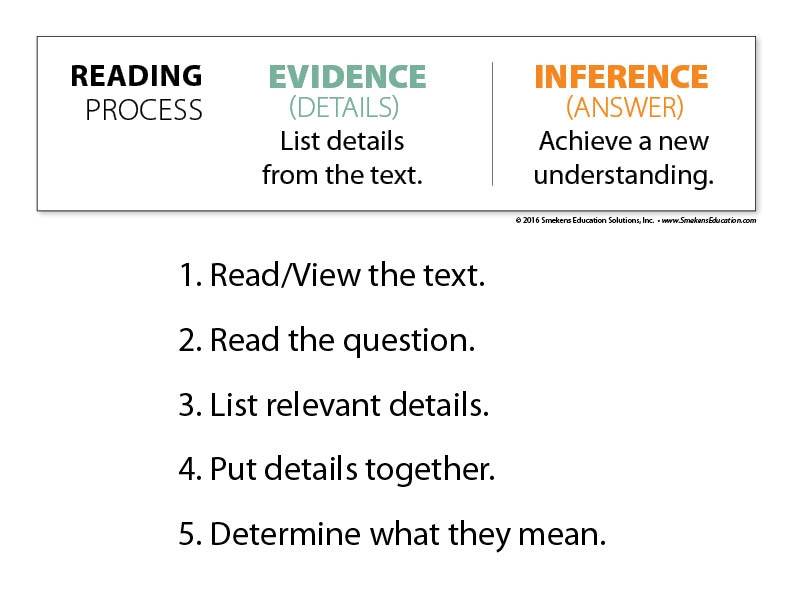7 What is Inferencing?
Inference is using observation and background to reach a logical conclusion. You probably practice inference every day.
Example:
- If you see someone eating a new food and he or she makes a face, then you infer he does not like it.
- If someone slams a door, you can infer that she is upset about something.
They give you hints or clues that help you “read between the lines.” Using these clues to give you a deeper understanding of your reading is called inferring. When you infer, you go beyond the surface details to see other meanings that the details suggest or imply (not stated).
Why do students struggle with making inferences?
Inferential questions are not answered directly in the text. Students need to go beyond the text which means using higher-level thinking skills.
How to make a successful inference:
To successfully make an inference, students must first look at the relevant information and list those specific textual details. Once they have compiled those ideas, they need to figure out what they mean in order to answer the question.

